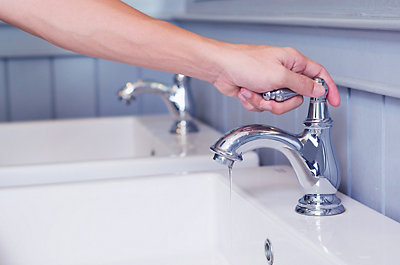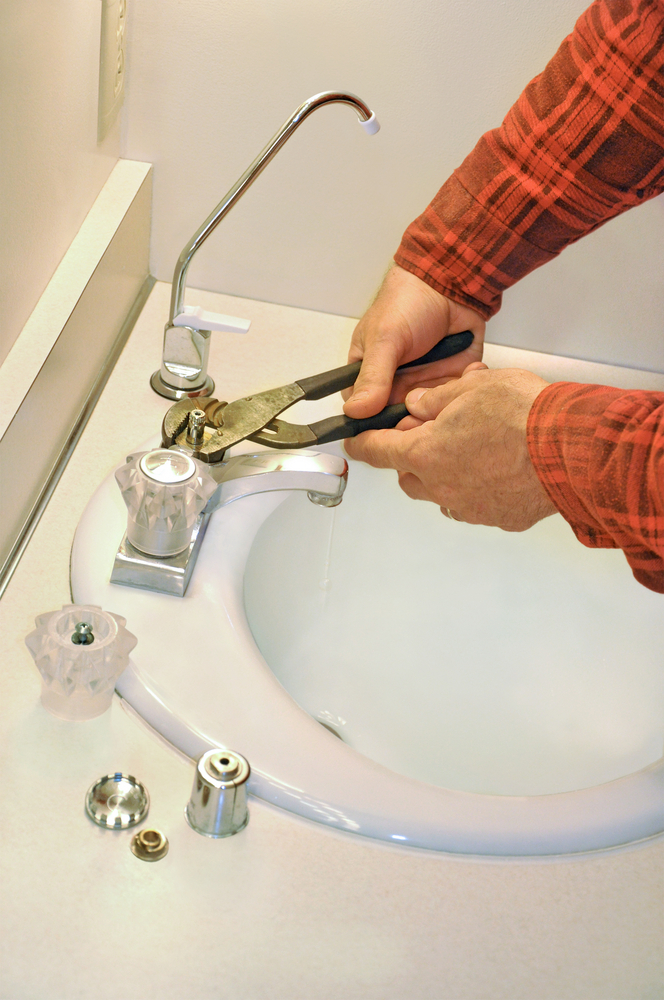Exploring the Significance of Resolving a Dripping Faucet
Exploring the Significance of Resolving a Dripping Faucet
Blog Article
On this page below you can discover a bunch of worthwhile points on the subject of Leaky Faucets: Why They Happen & What to Do About Them.

Trickling taps may look like a minor trouble, but their influence surpasses just the annoyance of the audio. From wasting water to sustaining unnecessary economic expenses and health dangers, disregarding a leaking faucet can cause numerous effects. In this short article, we'll look into why it's essential to address this common household concern without delay and effectively.
Wastefulness of Water
Ecological Impact
Dripping taps contribute considerably to water wastefulness. According to the Environmental Protection Agency (EPA), a single faucet dripping at one drip per second can squander more than 3,000 gallons of water annually. This not just pressures water sources however additionally impacts communities and wildlife based on them.
Financial Costs
Raised Water Expenses
Past the environmental influence, dripping faucets can blow up water expenses substantially. The accumulated wastefulness gradually translates right into greater energy expenses, which might have been avoided with prompt repair work.
Potential Residential Or Commercial Property Damages
In addition, extended leaking can lead to harm to fixtures and surfaces surrounding the faucet. Water accumulation can trigger staining, corrosion, and also structural problems if left ignored, resulting in added repair expenses.
Wellness Issues
Mold And Mildew and Mildew Growth
The continuous existence of dampness from a leaking faucet creates a suitable environment for mold and mildew growth. These fungis not only compromise indoor air quality however likewise position health threats, specifically for individuals with breathing problems or allergies.
Waterborne Diseases
Stagnant water in trickling taps can become a breeding ground for microorganisms and other pathogens, enhancing the danger of waterborne illness. Impurities such as Legionella bacteria thrive in stationary water, potentially causing significant ailments when consumed or inhaled.
DIY vs. Specialist Repair
Advantages and disadvantages of Do It Yourself Repair
While some may attempt to fix a trickling faucet themselves, do it yourself repairs include their own collection of obstacles. Without correct knowledge and devices, DIY efforts can intensify the concern or lead to insufficient repair work, lengthening the issue.
Benefits of Working With a Professional Plumber
Employing an expert plumber makes sure that the underlying root cause of the leaking faucet is resolved effectively. Plumbing professionals have the competence and devices to diagnose and repair faucet problems successfully, conserving time and lessening the danger of additional damage.
Step-by-Step Overview to Repairing a Dripping Faucet
Tools Required
Prior to trying to repair a dripping tap, gather the essential tools, including an adjustable wrench, screwdrivers, replacement parts (such as washing machines or cartridges), and plumber's tape.
Typical Tap Issues and Their Solutions
Recognize the sort of faucet and the certain problem causing the drip. Usual problems consist of worn-out washing machines, corroded valve seats, or malfunctioning O-rings. Describe maker instructions or on-line tutorials for step-by-step advice on repairs.
Safety nets
Normal Upkeep Tips
To stop trickling taps, carry out regular upkeep such as cleaning aerators, inspecting for leaks, and replacing damaged components quickly. In addition, think about setting up water-saving tools or upgrading to extra reliable fixtures.
Significance of Prompt Fixes
Dealing with trickling faucets as soon as they're seen stops additional water wastefulness and prospective damage, inevitably saving both water and cash over time.
Influence On Building Value
Assumption of Well-Maintained Residential Or Commercial Property
Preserving a residential or commercial property in good condition, including attending to maintenance concerns like dripping taps, improves its viewed worth and desirability among prospective customers or renters.
Impact on Resale Value
Residences with well-kept plumbing fixtures, consisting of taps, command higher resale values in the realty market. Resolving leaking faucets can add to a positive perception throughout building evaluations and settlements.
Ecological Duty
Specific Payment to Preservation
Taking obligation for fixing dripping faucets lines up with wider efforts towards water conservation and ecological sustainability. Every person's activities collectively make a significant effect on protecting valuable sources.
Sustainable Living Practices
By prioritizing timely repair work and taking on water-saving routines, people contribute to lasting living practices that profit both present and future generations.
Verdict
Addressing a leaking tap goes beyond mere ease; it's a vital step towards preserving water, minimizing financial expenses, and securing wellness and residential property. Whether with do it yourself repair work or specialist help, doing something about it to fix leaking faucets is a tiny yet impactful means to promote liable stewardship of sources and contribute to a healthier, more sustainable future.
Why Are My Faucets Dripping (And Can I Fix it Myself)?
Causes of a Dripping or Leaking Faucet
Whether you’re hearing drops of water falling and hitting a sink, or noticing water ooze out from the base of the spout, you shouldn’t ignore a dripping or leaking faucet. And, the good news is, sometimes you can fix the problem yourself.
In this article, we’ll review a few common causes of dripping and leaky. We’ll also walk you through some basic ways to find the problem and handle it without calling anyone — and let you know when to call in a pro.
But, no matter what the cause, or whether you can handle it on your own, the sooner you address it, the better.
Each drip may be a tiny amount of water. But, they all add up quickly. According to the U.S. Geological Survey, one faucet losing one drop every 20 seconds — five a minute — wastes around a liter of water every day, and 173 gallons a year.
Add in more than one in your house, and it’s a lot of water to waste. So, we’ll help you get to the bottom of things quickly.
Four Reasons Your Faucet May Be Dripping
Aerator is Damaged or Unseated Valve Seat is Corroded O Ring is Loose or Worn Out Part of the Assembly is Loose Aerator is Damaged or Unseated
If you unscrew the end of your faucet, you’ll find the aerator. It’s the little stem piece with a screen on it that shuts off the water circulation.
If it’s damaged, or if it’s not sitting right, it will allow water to pass through.
Valve Seat is Corroded
Next is the valve seat, which is connected to the washer. If the washer wasn’t in place correctly, then it could have ground against the seat. Over time, this damages the valve seat.
The problem could also be corrosion: Over time, the part has worn out, and it’s now allowing water to pass through.
O Ring is Loose or Worn Out
Since the o ring is only a small rubber gasket, it’s a common reason why the faucet is dripping. You’ll find it at the base of the faucet, and it’s there to keep water from coming out where it’s not supposed to.
However, it’s common for the o ring to wear out over time. When it does, you’ll notice a drip.
Part of the Assembly is Loose
So far, we’ve looked at a few small, specific parts. But, the problem could be anywhere in the assembly if something’s out of place.
Even if a part isn’t damaged, over time, it may have become loose or dislodged. It could be the parts we mentioned, or the aerator at the tip of the faucet, the stem itself,
Can I Fix a Leaky Faucet Myself?
Depending on the problem, and how handy you are, there’s a chance you can fix a leaky faucet without calling a professional. But, you do run the risk of making the problem worse.
If it’s a small drip, you can certainly try a few troubleshooting tactics. We’ll walk you through them in a moment.
But, no matter what, your first step should be shutting off the water coming into the faucet. You should find a shutoff valve under the sink on the pipes leading to it. Turn each one clockwise until they close tightly.
Next, make sure you have the right tools for whatever you’re attempting. It’s tempting to make do with what you have. But, you need the right ones for a reason: You’re often dealing with small parts that can break if you handle them carelessly.
If you’re feeling confident, here are some places to start.
Items Near the Tip of the Faucet
A few of the parts we mentioned — particularly the valve seat and washer — are located at the tip of the faucet where the water comes out. They’re easy to access, making it a good place to start.
Check the O Ring
To check the o ring, you’ll need to take off the spout at the base. It’s easiest on kitchen sinks with long spouts, versus the smaller, bulkier base on most bathroom sinks.
Either way, this can be tricky, so do it carefully and don’t force anything. If it’s not coming right off, you’re much better off calling in a pro than possibly breaking something.
For a kitchen sink, there’s usually a nut or coupling assembly at the base of the spout. These often slide off easily without using any tools.
Once you’ve disassembled those parts, gently but forcefully twist off the spout.
Then, you can see the o rings. There should be two of the rubber gaskets on the base. If they look worn or damaged, replace them, and see if that solves the problem.

I'm certainly very fascinated by Why Are My Faucets Dripping (And Can I Fix It Myself)? and I'm hoping you enjoyed my entry. Be sure to take the time to distribute this blog entry if you enjoyed it. Thank you for going through it.
Report this page